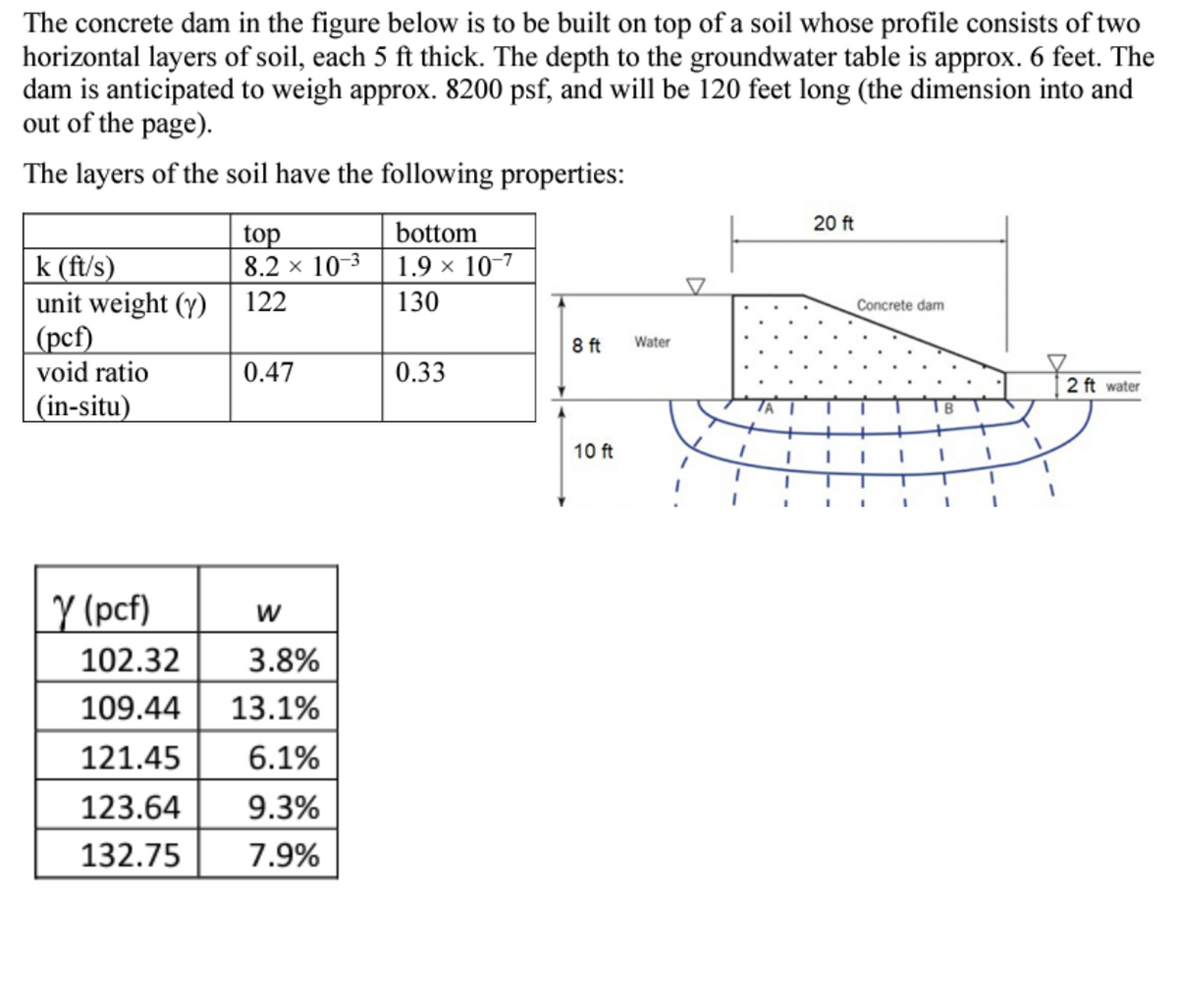It has been anticipated that the soil under the proposed dam is contaminated, and needs to be removed and backfilled to a depth of 2.5 feet. A Standard Proctor compaction test was conducted on soil from a borrow pit, with the results shown below right. Based on the results: a) Plot the Proctor curve for the borrow soil. b) Find the optimum water content and max. dry unit weight for the borrow soil. c) Determine whether the unit weight of the top layer can be met by compacting to 95% of maximum, and what the range of moisture content for that unit weight is.
It has been anticipated that the soil under the proposed dam is contaminated, and needs to be removed and backfilled to a depth of 2.5 feet. A Standard Proctor compaction test was conducted on soil from a borrow pit, with the results shown below right. Based on the results:
a) Plot the Proctor curve for the borrow soil.
b) Find the optimum water content and max. dry unit weight for the borrow soil.
c) Determine whether the unit weight of the top layer can be met by compacting to 95% of maximum, and what the range of moisture content for that unit weight is.
d) If we borrow soil from a pit with a void ratio of 0.71, determine how much soil we need to borrow to backfill below the dam to match the in-situ void ratio of the top layer of soil.

Trending now
This is a popular solution!
Step by step
Solved in 6 steps with 12 images

Can you show how to do part d I had the first 3 parts done before. I was confused with part D
Thank You



